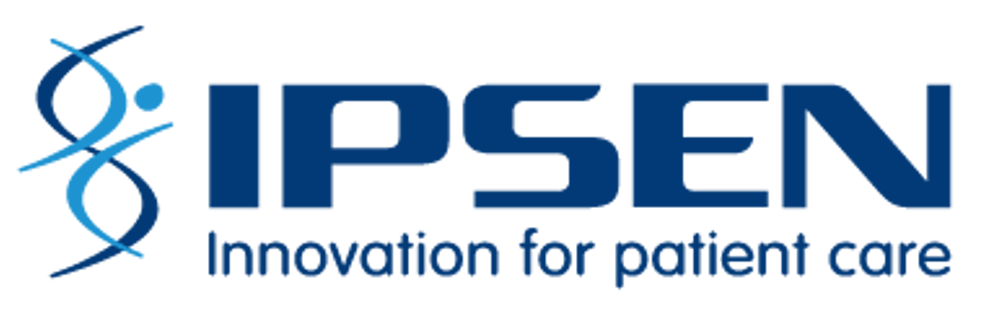
Impact of inappropriate care and disability accumulation on quality of life in FOP
Commissioned by Ipsen and developed for Medthority. This content is intended for healthcare professionals only and has been reviewed by Ipsen for scientific accuracy.
DSFOP-UK-000029 – Date of preparation January 2022
Overview
Can you imagine irreversibly losing mobility over your lifetime as bone grows throughout your body in places where it shouldn’t normally be? This is what the future holds for patients with the ultra-rare genetic disorder fibrodysplasia ossificans progressiva (FOP).
Misdiagnosis of FOP and its impact on HO progression
FOP is characterized by the progressive transformation of soft and connective tissues into ribbons, sheets, and plates of bone via a process known as heterotopic ossification (HO)1. This is often preceded by flare-ups (click here to learn more about FOP flare-ups)2. HO often eventually leads to ankylosis (fusion) of joints, which typically affects the neck, followed by the back, shoulders, elbows, hips, knees, wrists, ankles, and finally jaw – irreversibly restricting movement in these areas, resulting in a reduction of quality of life (QoL) and severe disability3.
In patients with FOP, delayed diagnosis and misdiagnosis can lead to unnecessary and inappropriate care which can contribute to the precipitation of HO and thereby disability accumulation, immobilization, decreased patient QoL and shortened lifespan (see Figure 1)1,4,5
Figure 1. Delayed diagnosis and misdiagnosis contribute to the accumulation of disability in patients with FOP5.
FOP, fibrodysplasia ossificans progressiva; IFOPA, International fibrodysplasia ossificans progressiva association
Impact of disability accumulation on patients' QoL
Cumulative disability in FOP results in an increasing need for assistive devices with increasing age; patients under nine years of age require a median of two devices, while patients over 15 years of age require a median of 13 devices6. Many patients with FOP become immobilized and confined to a wheelchair by their third decade of life, resulting in the subsequent requirement of lifelong assistance in performing activities of daily living1,6.
Although pain in FOP is primarily considered to arise from flare-ups and HO progression, 30–55% of patients also experience pain during non-flare-up periods, suggesting the presence of background chronic pain in individuals with FOP7. Regardless of flare-up status, 45–74% of patients with FOP with moderate-to-severe pain report low levels of emotional and physical health, with many experiencing feelings of anxiety, depression, or irritability7. Furthermore, the severity of pain in patients with FOP has significant impact on emotional health, physical health, and overall QoL, highlighting the need for an improved understanding of pain and emotional health in FOP7.
Figure 2. Disability in FOP is cumulative, and patients living with FOP require lifelong assistance in performing activities of daily living.
How could you better support patients with FOP?
In addition to rapid and earlier diagnosis of FOP, guidelines recommend the avoidance of: intramuscular injections, passive movement of joints, certain dental procedures, and surgical removal of heterotopic bone (as these can further exacerbate HO). Improved awareness of how disability accumulates in FOP can help us to better support patients’ care and improve their quality of life.
To learn more about care pathways in FOP, please keep an eye out for the next article of the series (available next month).
Knowledge check
Abbreviations
FOP, fibrodysplasia ossificans progressiva; HO, heterotopic ossification; IFOPA, International fibrodysplasia ossificans progressiva association; QoL, Quality of Life
References
- Pignolo RJ, Shore EM, Kaplan FS. Fibrodysplasia ossificans progressiva: diagnosis, management, and therapeutic horizons. Pediatr Endocrinol Rev. 2013;10 Suppl 2(0 2):437-448.
- Pignolo RJ, Bedford-Gay C, Liljesthröm M, et al. The Natural History of Flare-Ups in Fibrodysplasia Ossificans Progressiva (FOP): A Comprehensive Global Assessment. J Bone Miner Res. 2016;31(3):650-656. doi:10.1002/jbmr.2728.
- Available at: https://rarediseases.org/rare-diseases/fibrodysplasia-ossificans-progressiva/ (accessed September 2021).
- Sherman LA, Cheung K, De Cunto C, Kile S, Pignolo RJ, Kaplan FS. The diagnostic journey in fibrodysplasia ossificans progressiva: insights from the FOP registry. Presented at ASBMR 2020, 11–15 September 2020. Virtual Meeting. P-841.
- Kitterman JA, Kantanie S, Rocke DM, Kaplan FS. Iatrogenic harm caused by diagnostic errors in fibrodysplasia ossificans progressiva. Pediatrics. 2005;116:e654–61.
- Pignolo RJ, Cheung K, Kile S, Fitzpatrick MA, De Cunto C, Mukaddam MA, et al. Self-reported baseline phenotypes from the International Fibrodysplasia Ossificans Progressiva (FOP) Association Global Registry. Bone 2020;134:115274.
- Peng K, Cheung K, Lee A, Sieberg C, Borsook D, Upadhyay J. Longitudinal Evaluation of Pain, Flare-Up, and Emotional Health in Fibrodysplasia Ossificans Progressiva: Analyses of the International FOP Registry. JBMR Plus. 2019;3(8):e10181. Published 2019 Mar 1. doi:10.1002/jbm4.10181.
of interest
are looking at
saved
next event
- Misdiagnosis of FOP and its impact on HO progression
- Impact of disability accumulation on patients' QoL
- How could you better support patients with FOP?
- Knowledge check
- Article 1: From soft-tissue to bone: Clinical presentation of fibrodysplasia ossificans progressiva (FOP)
- Article 2: The unpredictable nature of flare-ups in fibrodysplasia ossificans progressiva (FOP)
- Article 4: Person-centred care pathways: An unmet need in FOP

